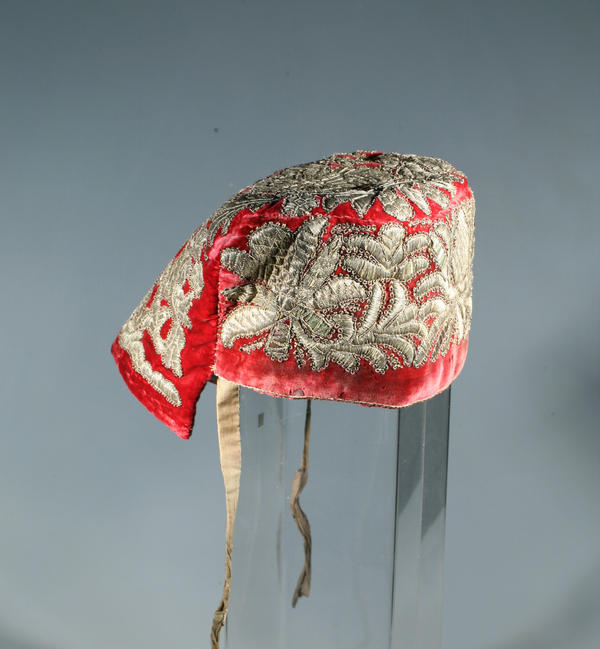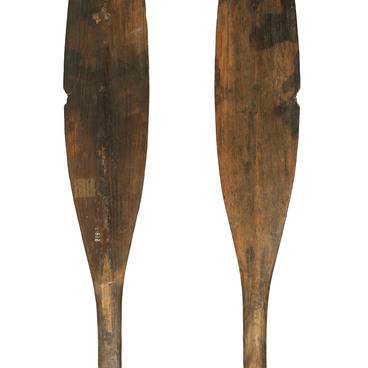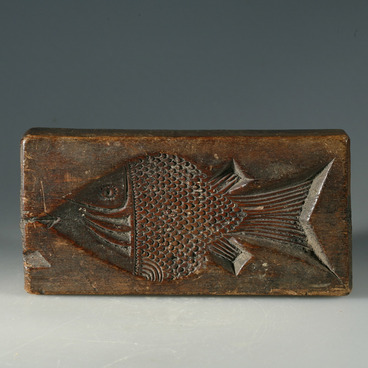The povoinik, or shamshur, is a traditional headdress of married peasant women of the Russian North. It fully covered the hair which women did in two braids and put up on the head. In the 19th century, a headdress was a mandatory element of women’s clothes. Only girls and unmarried young women could wear their hair uncovered.
#6
Povoinik
#7
#4
“Portrait of Grand Daughter Tasya” by Ivan Doschennikov. The Kama River region, 1864.
#15
The ritual of changing a girl’s headdress to a woman’s one was the main point in the wedding rite. It took place in the groom’s house before the wedding feast. After that, the bride was finally considered a married woman. Now her hair was fully covered and only her husband could see it.
#9
The Old Believer kokoshnik is made from brocade put on a birch bark frame. The base has the shape of an upside-down truncated cone
The base of a povoinik is a canvas cap with a flat hard top and a soft band. The top could be circular, oval, or trapeze-shaped. The narrow band — the part of the headdress that closely fits the head — was tied with strings at the back. The povoinik front would often have a hard decoration that covered the forehead. A shamshur was worn with a colour kerchief. It was folded diagonally, pinned to the band and knotted at the nape. On holidays, a silver or gold-embroidered ribbon would be worn instead of a kerchief.
#10
The hard top of a canvas cap was made from quilted or bonded canvas. Canvas was wrapped in a red cotton fabric, red calico, or silk, and decorated with galloons. Where the top part of the shamshur joined the band, a canvas or wooded padding in the form of a roll was attached to keep the shape of the headdress.
he povoinik is made as a round cap with a crown-shaped band on a carton frame. The lining is made from red printed calico.
#12
One of the povoinik types was volosnik. It was a silk or quilted cap on a carton frame with a tall conical crown. The lining was made from printed canvas. Red silk was used for the part which was at the nape. The cap was decorated with an ornament. Typically, plant, fairy tale and floral motifs were chosen. The upper half was decorated with bullion embroidery, seed beads, bugle beads and foil.
#11
The shamshur is hood-shaped and made from scarlet velvet. It has bullion embroidery with a plant motif. The forehead rim is decorated with a narrow galloon. The lining is from printed canvas.
The shamshur was for every day wear, ceremonial occasions required a more ornate headdress. Until the second half of the 19th century, it was worn under another headdress — kokoshnik, soroka or kika — a cap made from velvet, silk or satin in the shape of a crown. A kokoshnik looked like a cap with a tall crown and a flat round bottom. The crown was sewn with beads and coloured stones. The lining was red or crimson silk. The bottom rim on the face side was frilled.
#13
In its shape, a soroka was much like a shamshur but it had a taller band and was decorated with long ear flaps on the sides. From the 1850s, the povoinik began to be used as a headdress in its own right. In some regions (guberniyas), for about two years after marriage, a young wife wore a soroka. After the birth of the first child, her status of a young wife changed, and she was supposed to wear a povoinik and a different, more modest, type of clothes
The povoinik is in the shape of a round cap decorated with a forehead galloon and made from brocade with sequins and woven gold.
#16
O.E. Kler Sverdlovsk Regional Ethnography Museum
читать дальшескрыть
00:00
00:00
1x
Povoinik
Время создания
19th century
6
Открыть в приложении
Поделиться


